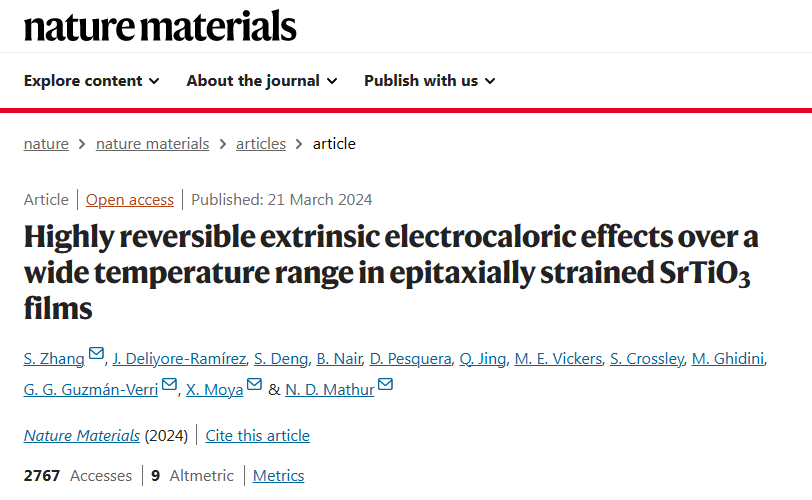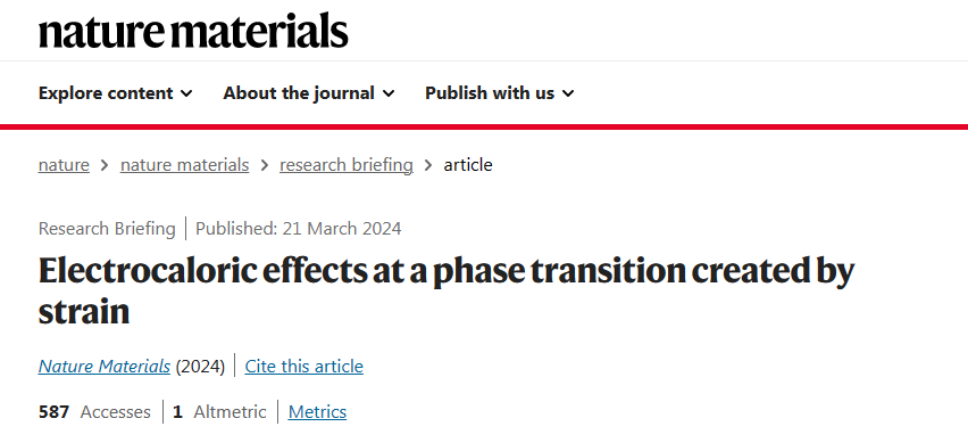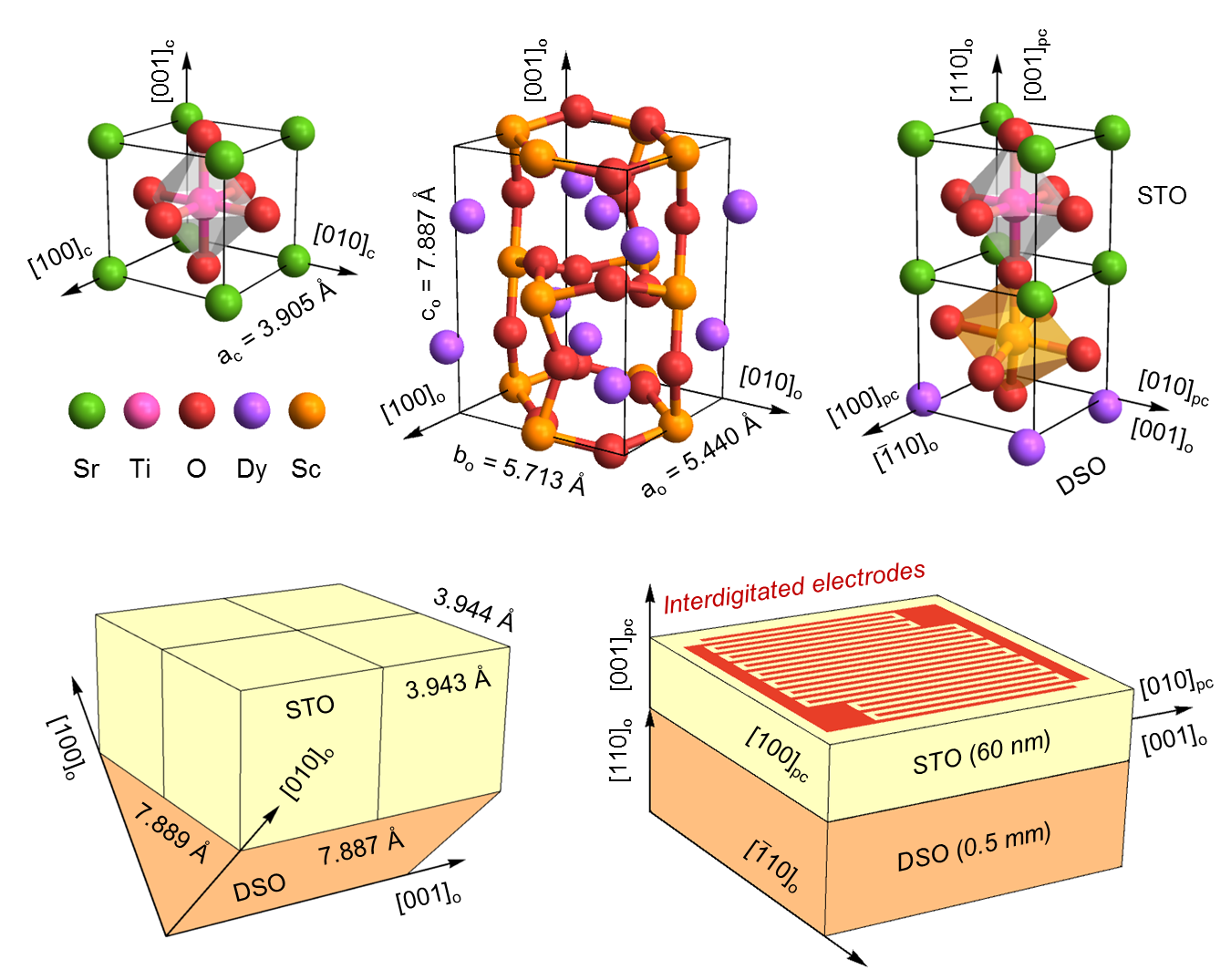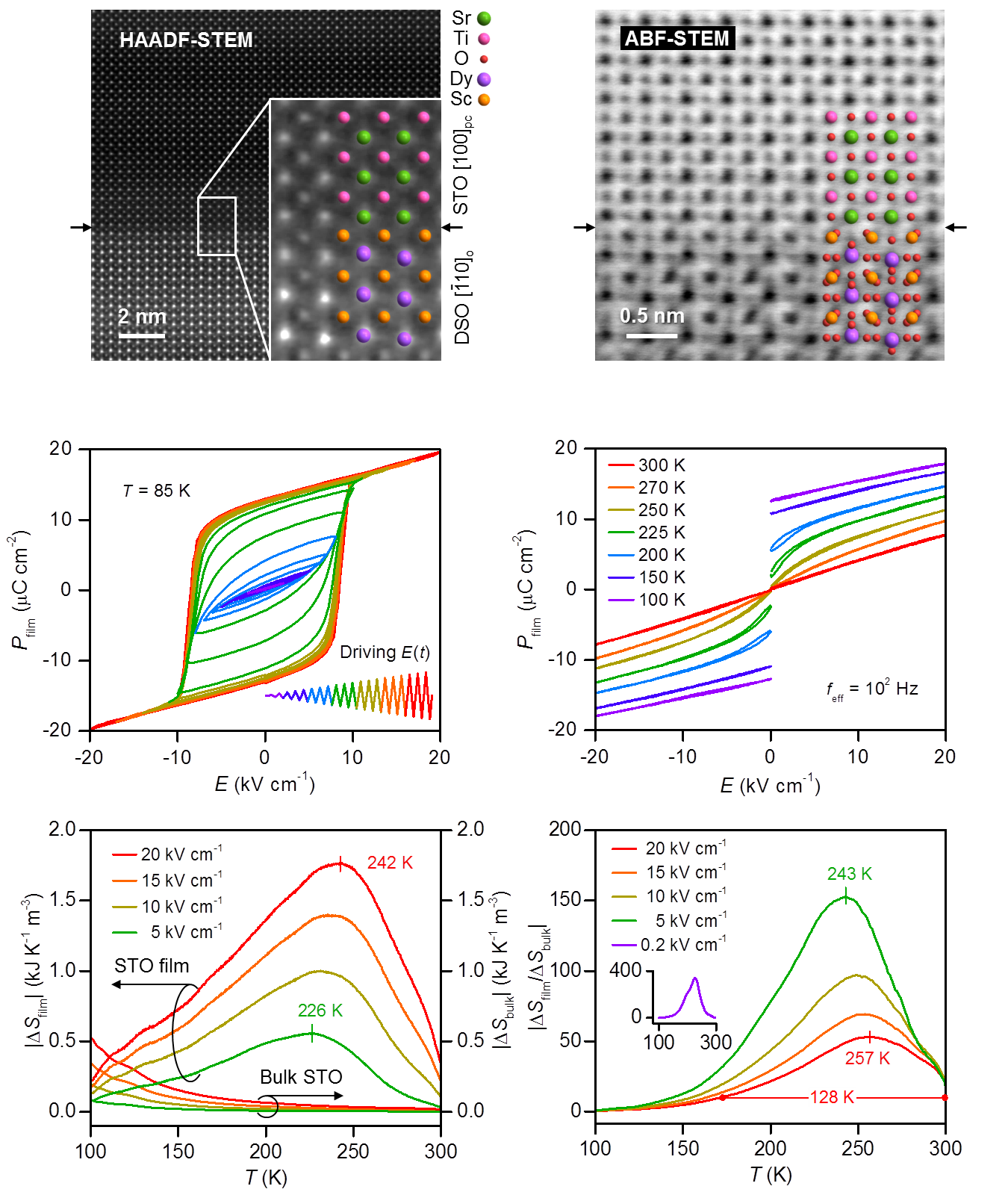Recently, a research team from College of Science in NUDT, collaborating with University of Cambridge and other six scientific establishments, has made substantial progress in the field of ferroelectric refrigeration. Researchers performed the first experimental study of strain-enhanced electrocaloric (EC) effects in the incipient ferroelectrics of strontium titanate (SrTiO3; STO), followed the well-known strain engineering in oxide epitaxial films. Under maximum electric field, the strain enhances EC effects of STO by an order of magnitude over a wide range of temperatures from 172 K to 300 K (i.e. the room temperature), at which the new solid-state refrigeration technology could be benefited. The research has been published online in Nature Materials (Impact Factor 41), in forms of an article entitled "Highly reversible extrinsic electrocaloric effects over a wide temperature range in epitaxially strained SrTiO3 films " (DOI: 10.1038/s41563-024-01831-1) and a researching briefing entitled " Electrocaloric effects at a phase transition created by strain " (DOI: 10.1038/s41563-024-01836-w).


The EC effects involved in this study are the voltage-driven thermal changes (e.g. isothermal entropy change or adiabatic temperature change) due to changes of local electrical polarization. As an emerging solid-state refrigeration technology, EC refrigeration has numerous advantages such as high efficiency, environmentally-friendliness, fast refrigeration, easy integration, etc, and it is considered to be one of the promising technical solutions to replace the existing vapor compression refrigeration. However, the EC effect is small in most of the natural materials, and the operating temperature is also low or narrow, which limits its applications.

Strain engineering for epitaxial STOfilm
At temperatures approaching to absolute zero, bulk STO is nearly ferroelectric, and the observed voltage-driven thermal changes have been proposed for cryogenic cooling. However, the EC effect of bulk STO is much smaller near room temperature, considering useless. Via pulsed laser deposition, the research team has prepared high-quality STO epitaxial films on a single crystal substrate of dysprosium scandate (DyScO3; DSO), and increased the EC effects of STO by tens to hundreds of times around the phase transition temperature ( T C = 243 K), consisting with the canonical Landau description. Strain engineering demonstrated by this work could be exploited in order to expand the library of EC materials, either by adding new materials to the list of promising candidates, or modifying the range of operating temperatures.

Structural characterization, ferroelectric properties and strain-enhanced EC effects in epitaxial STOfilms
The research was supported by the National Natural Science Foundation of China (NSFC), the China Scholarship Council (CSC) program and other related research fundings.
Written by: Cai Weiqi





